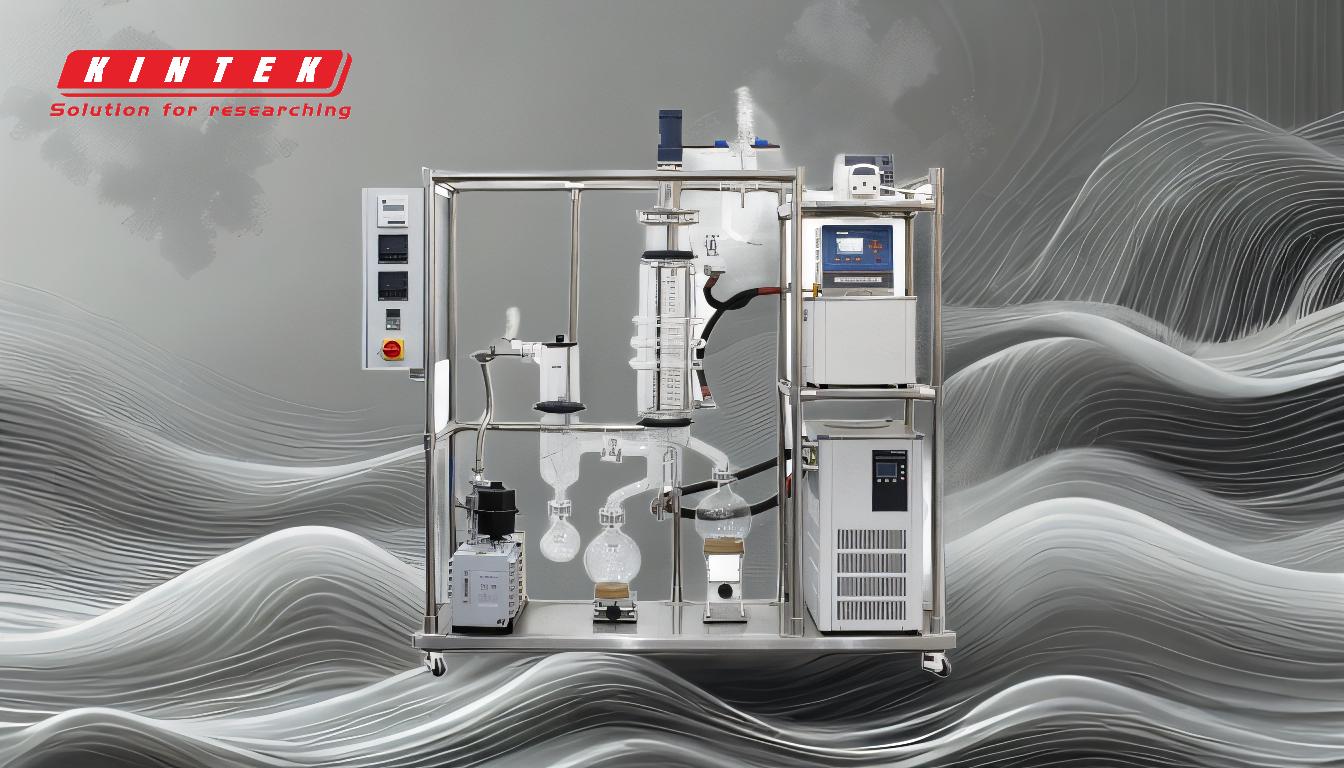In distillation, a vacuum pump plays a critical role in reducing the pressure within the system, which lowers the boiling points of the substances being distilled. This allows for the separation of components at lower temperatures, minimizing thermal degradation and preserving the quality of sensitive materials. The vacuum pump facilitates efficient evaporation and condensation, especially in processes like short path and wiped film distillation, where maintaining a high vacuum gradient is essential. Additionally, it helps create a continuous feed system, removes oxygen to prevent oxidation, and ensures the purity of the extracted solvents. Overall, the vacuum pump enhances the efficiency, speed, and quality of the distillation process.
Key Points Explained:

-
Reduction of Boiling Points:
- By creating a partial vacuum, the vacuum pump significantly lowers the atmospheric pressure inside the distillation system.
- This reduction in pressure decreases the boiling points of the substances being distilled, allowing them to evaporate at much lower temperatures than they would under normal atmospheric conditions.
- This is particularly beneficial for heat-sensitive materials, as it minimizes the risk of thermal degradation.
-
Enhanced Efficiency and Speed:
- Lowering the boiling points speeds up the distillation process, making it more efficient.
- This is especially useful for separating heavier molecules, which would otherwise require much higher temperatures and longer processing times.
-
Prevention of Oxidation:
- The vacuum pump removes oxygen from the system, which helps prevent oxidation of the materials being distilled.
- This is crucial for preserving the quality and integrity of sensitive compounds, such as cannabis extracts or other organic substances.
-
Facilitation of Continuous Feed Systems:
- The vacuum created by the pump helps in establishing a continuous feed system, ensuring a steady flow of materials through the distillation process.
- This continuous operation is essential for industrial-scale distillation, where maintaining consistent output is critical.
-
Maintenance of High Vacuum Gradient:
- In processes like wiped film and short path distillation, maintaining a high vacuum gradient is essential for efficient evaporation and condensation.
- The vacuum pump, often combined with other components like turbo molecular pumps, cold fingers, and vacuum condensers, ensures that this gradient is maintained throughout the process.
-
Purity of Extracted Solvents:
- By creating a vacuum environment, the pump helps in maintaining the purity of the extracted solvents.
- This is particularly important in applications where the final product must meet high purity standards, such as in pharmaceutical or food-grade solvent extraction.
-
Resource Efficiency and Pump Longevity:
- The operation of the vacuum pump can be regulated manually or automatically using a Vacuum Controller.
- This regulation not only saves resources but also extends the lifespan of the pump by preventing overuse and ensuring optimal performance.
-
Condensation of Volatile Molecules:
- The vacuum pump, in conjunction with components like cold fingers and vacuum condensers, helps condense volatile molecules.
- This is crucial for capturing and separating these molecules effectively, ensuring that they do not escape into the atmosphere or contaminate the final product.
In summary, the vacuum pump is an indispensable component in distillation processes, particularly those involving heat-sensitive or high-purity materials. Its ability to lower boiling points, prevent oxidation, and maintain a high vacuum gradient makes it essential for efficient, high-quality distillation.
Summary Table:
| Key Role of Vacuum Pumps in Distillation | Benefits |
|---|---|
| Reduction of Boiling Points | Enables lower-temperature distillation, minimizing thermal degradation. |
| Enhanced Efficiency and Speed | Speeds up separation of heavy molecules, reducing processing time. |
| Prevention of Oxidation | Removes oxygen to preserve the quality of sensitive compounds. |
| Continuous Feed Systems | Ensures steady material flow for industrial-scale operations. |
| High Vacuum Gradient Maintenance | Essential for efficient evaporation and condensation in short path and wiped film distillation. |
| Purity of Extracted Solvents | Maintains high purity standards for pharmaceutical and food-grade applications. |
| Resource Efficiency and Pump Longevity | Regulates pump operation to save resources and extend lifespan. |
| Condensation of Volatile Molecules | Captures and separates volatile molecules effectively. |
Optimize your distillation process with the right vacuum pump—contact our experts today!











